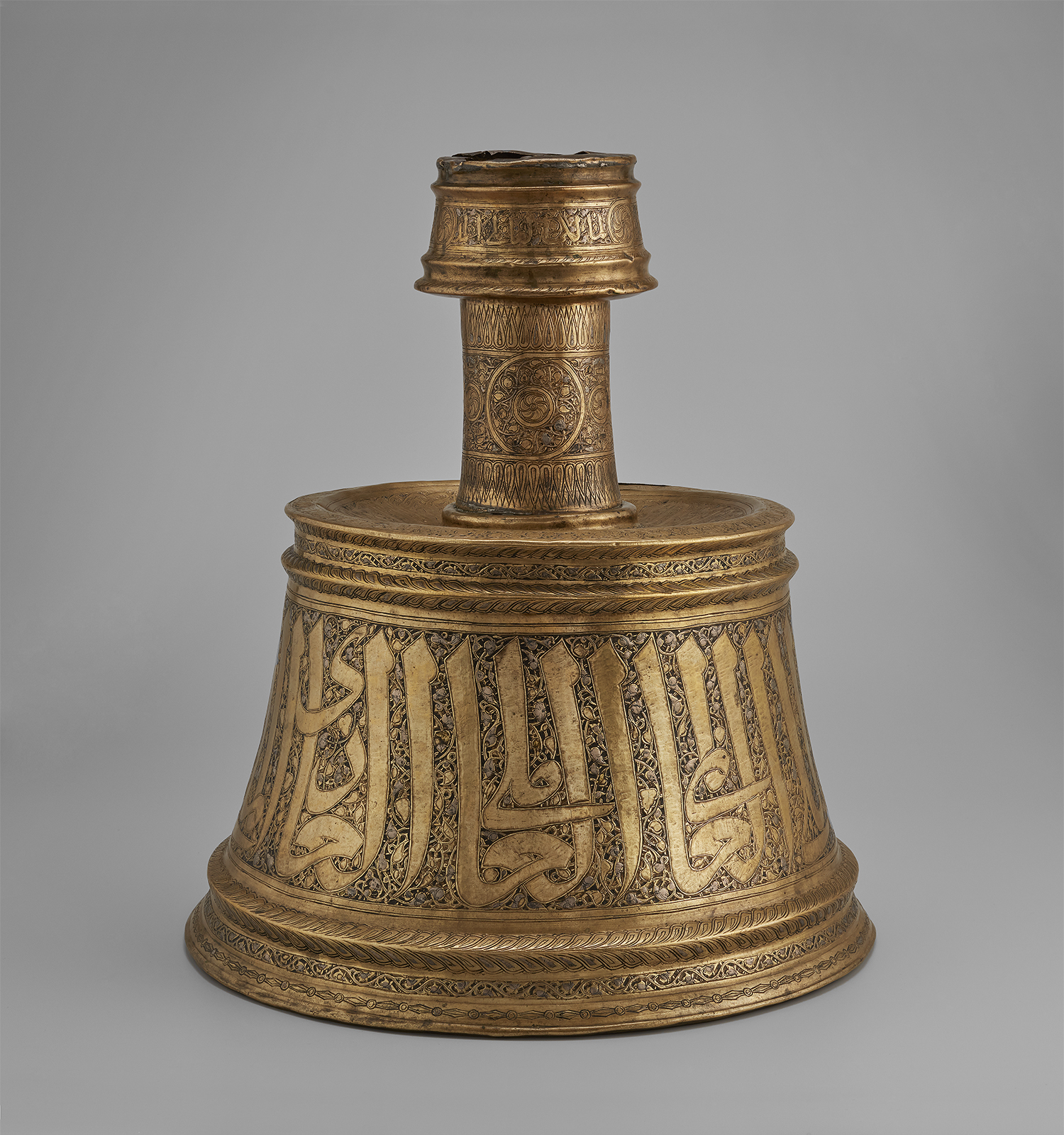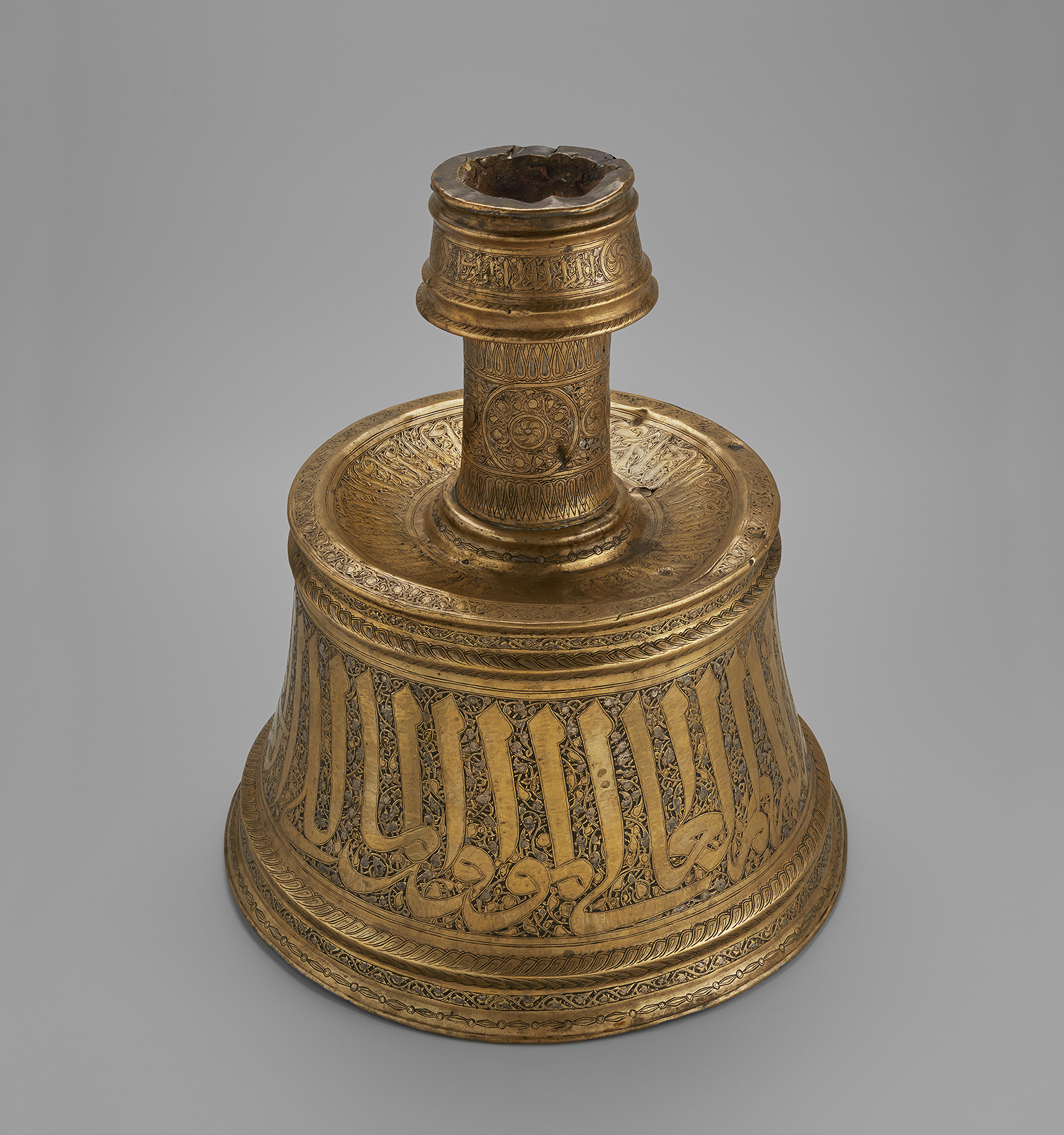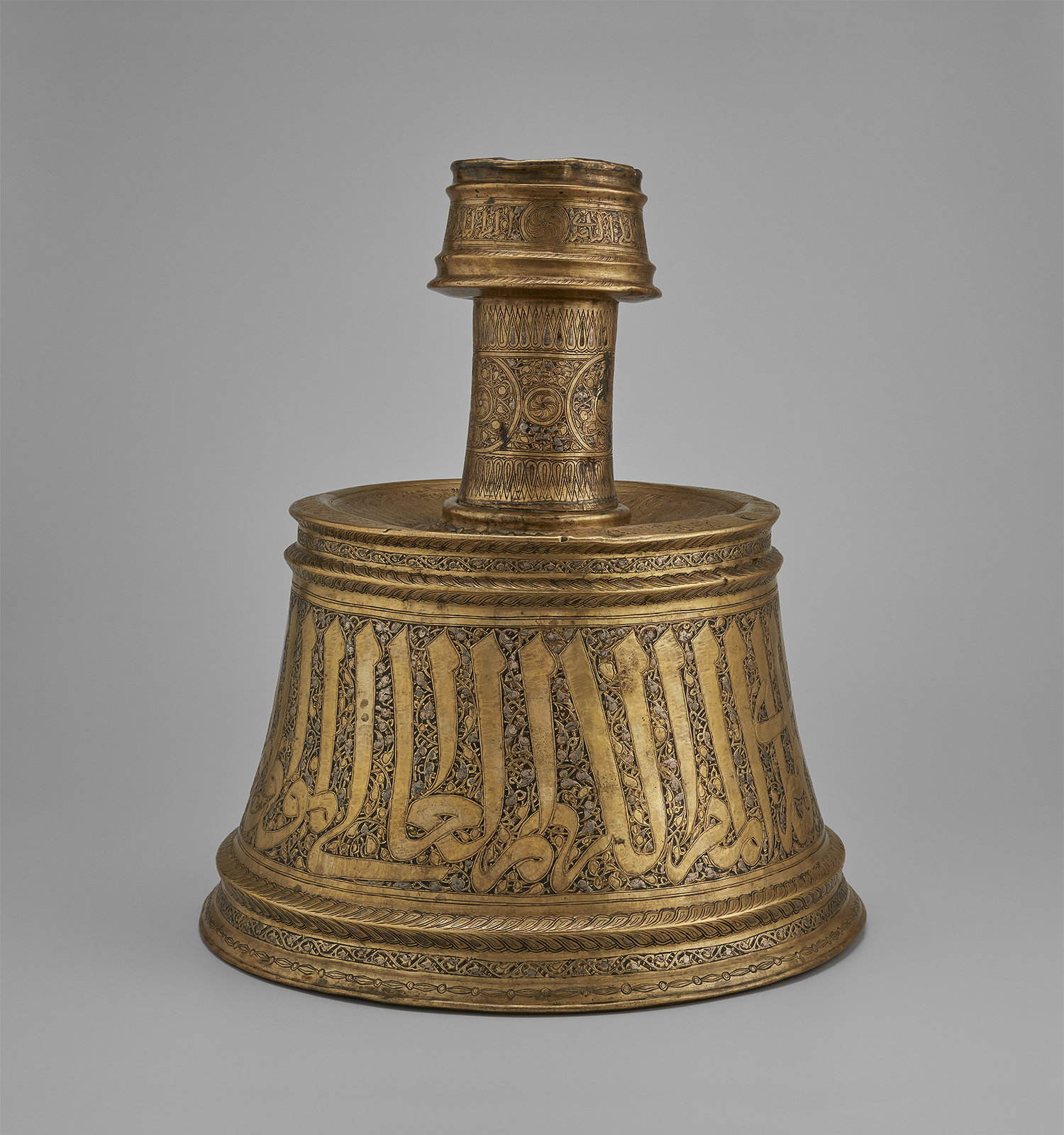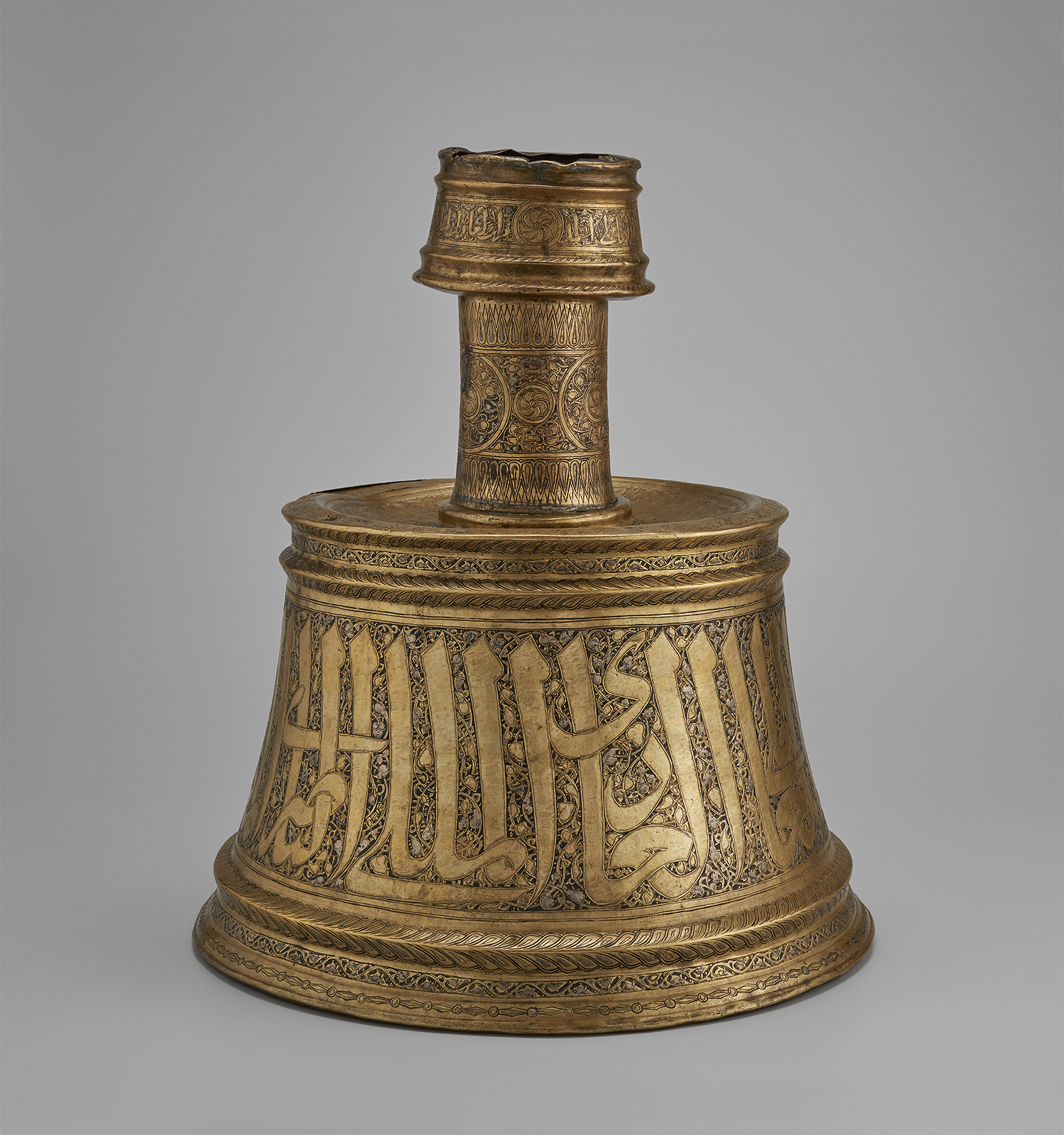Click on the image to zoom
Candlestick
- Accession Number:AKM736
- Place:Egypt or Syria
- Dimensions:35 cm x 31.5 cm
- Date: first half of 14th Century/ownership inscription 1554
- Materials and Technique:brass, formerly silver and gold-inlaid, with remains of black paste inlay
-
This object is included in the following tour(s):
Stop #2 of Audio Guide: CreativityClick below to listen
Next up in the Creativity Tour:
More About Candlestick
Produced by Mamluk artisans in the mid-14th century, this candlestick with a conical base was hammered from brass sheet in two parts and soldered together. Originally, the candlestick’s surface would have sparkled with gold and silver inlays. These are now missing, though areas with recessed ground and undercut rims indicate their original locations. A black organic material applied to the background would have provided a strong contrast to the precious metal inlays.
Further Reading
A tall Arabic inscription in bold letters adorns the candlestick body. It reads:
Al-maqarr al-karim al-‘ali al-mawlawi al-maliki al-‘alimi al-‘amili al-‘adili al-maliki al-nasiri
The honourable high excellency the lordly, the royal, the wise, the diligent, the just, the officer of al-Malik al-Nasir
Candlesticks of this type and style of decoration were produced between about 1320 and 1360, which spans the reigns of two sultans with the title al-Malik al-Nasir: Sultan al-Malik al-Nasir Muhammad (1293–94, 1299–1309, 1310–41) and his son Sultan al-Malik al-Nasir Hasan (1347–51, 1354–61). The owner of the candlestick was in the service of one of these two sultans. The introductory titles “the honourable high excellency” indicate that the owner was of the highest rank.
In addition to its large inscription, the candlestick is heavily decorated with vegetal and other patterns. A feather design runs along each of the candlestick’s ribs and upper rim. A narrow frieze of scrolling leaves lies beyond the ribs; around the lower rim is a pearl and diamond repeat design. The shoulder has an Arabic inscription in its concave drip tray. A leafy design runs around the top of the outer rim and a pearl and diamond design around the base of the neck. The wide band on the neck has a series of large and small roundels with a wide fringe above and below. The small roundels all contain a six-petalled whirling rosette surrounded by leafy scrolls. Such rosettes are also found in roundels that punctuate a narrow Arabic inscription in the candlestick socket. The ribs are plain or with engraved lines, an abbreviation of the feather design on the larger ribs on the body of the candlestick.
The candle for this candlestick might have been as richly decorated as its holder. Wax candles were often heavily scented with ambergris, aloes wood and other incense and decorated with colourful paper designs and, for the most extravagant ones, silver and gold leaf. They would be used to light the grandest buildings, both palaces and mosques. Endowments to religious buildings often stipulate the number of candles to be provided and when they should be lit. Candles and candlesticks also played an important part in Mamluk ceremonial. Contemporary historians describe how amirs competed to have the finest candle and candlestick for court processions at night. [1]
— Rachel Ward
Notes
[1] For the use of perfumed and decorated candles see Rachel Ward, ‘Incense and incense burners in Mamluk Egypt and Syria’ in Transactions of the Oriental Ceramic Society 1990-1991, vol. 55, 1992, pp. 67-82 ISBN: 9780856674228
James W. Allan, Islamic Metalwork, the Nuhad Es-Said Collection, pp. 82-83 quotes a description of a candlelit procession in 1333 which emphasises the quality of the candles carried by the amirs and their households. ISBN: 9780856675003
Note: This online resource is reviewed and updated on an ongoing basis. We are committed to improving this information and will revise and update knowledge about this object as it becomes available.








 Double Door, AKM707
Double Door, AKM707